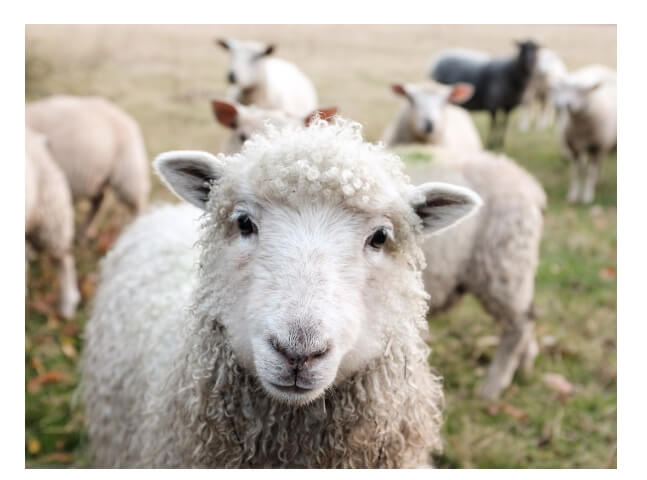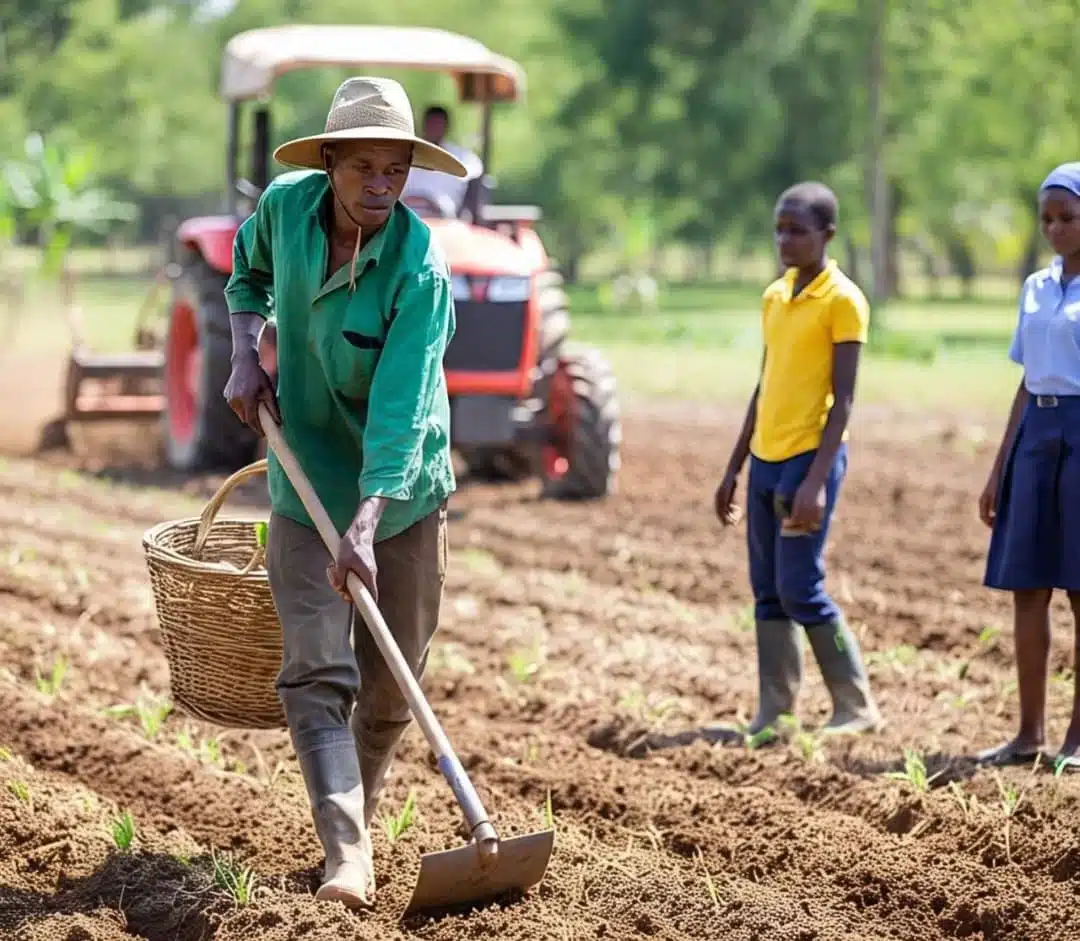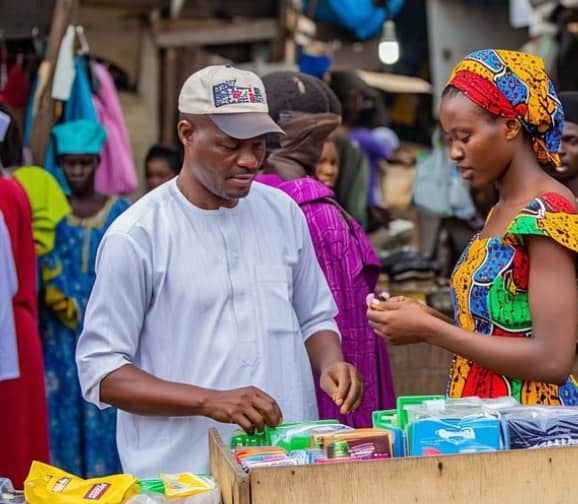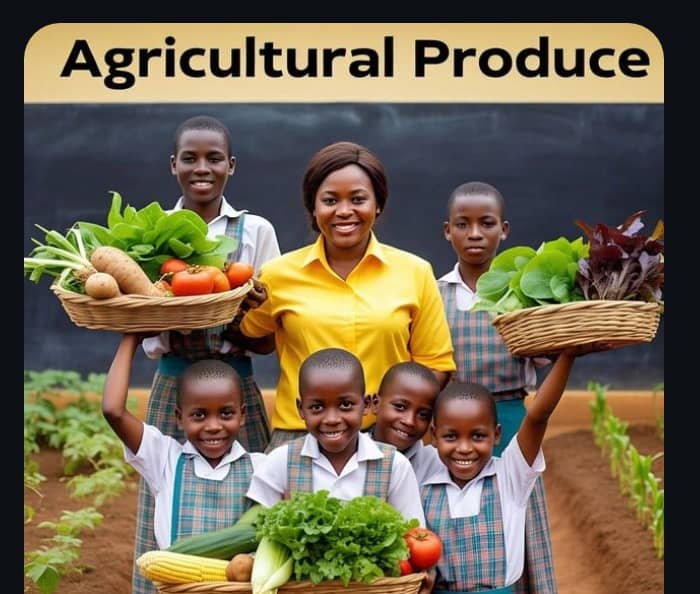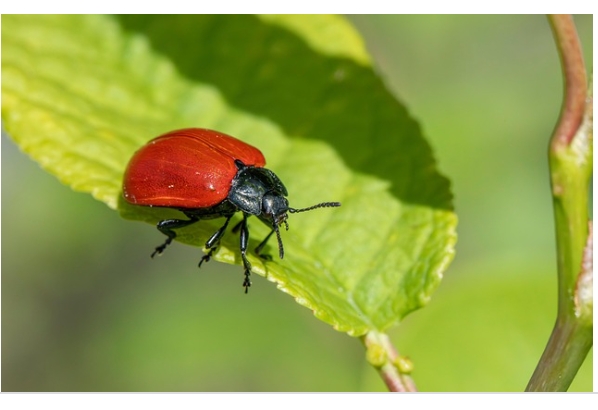Table of Contents
ToggleFrom Farm to Plate: Discovering Nigeria’s Agricultural Produce Through a Child’s Eyes
“Mummy, is yam born inside the ground or from heaven?”
That was the exact question little Sade asked me after we returned from our school’s community garden visit last term. Her innocence brought back vivid memories of my own childhood, when my grandmother used to take me to the farm in Oke-Aro. That’s where I first learned that food doesn’t just appear on the table—it grows, it sweats, it waits, and it gives.
Subject: Vocational Aptitude
Class: Primary 1
Term: Third Term
Week: 11
Topic: Agricultural Produce
Sub-topic: Meaning, Examples, and Uses of Agricultural Produce
Duration: 40 minutes
Entry Behaviour
Pupils have previously learned about gardening tools and farming activities. They can identify simple tools like hoes and watering cans.
Key Words
-
Agriculture – Growing crops and raising animals.
-
Produce – Things we get from farming.
-
Harvest – When crops are gathered.
-
Food – What we eat to stay strong.
Behavioural Objectives
By the end of this lesson, pupils should be able to:
-
Define agricultural produce in their own words.
-
Identify at least five examples of farm produce common in Nigeria.
-
Mention the uses of these agricultural products.
-
Relate how farming helps families and the community.
-
Share one personal experience or observation about food from farms.
Embedded Core Skills
-
Observation
-
Communication
-
Cultural Awareness
-
Empathy
-
Curiosity
Learning Materials
-
Real farm produce (yam, maize, pepper)
-
Flashcards with produce pictures
-
A short storybook on farming
-
A woven basket
-
Local radio jingle about food
Reference Books
-
Lagos State Scheme of Work
-
Computer Studies for Primary Book 3
-
Practical Agricultural Handbook for Pupils
Set Induction
“Teacher! My mummy said if there’s no garri in the house, it means market has refused to smile.”
That’s how our day started. I turned, smiled, and leaned into the conversation. “Do you know where garri comes from?”
Chinedu raised his hand confidently, “From the shop!”
We all laughed. Then I asked, “And where do the shops get it from?” Silence. Eyitayo murmured, “Maybe… from the big road?”
That moment opened the gate for today’s journey into the world of Agricultural Produce—the things we get from farming, and how they nourish not only our bellies but our very communities.
Building Background Knowledge
Children may not all live near farms, but they have seen the results: food in the pot, fruits in the market, snacks in their lunchboxes. Every grain of rice, every orange, every tomato began as a quiet miracle in the soil.
Main Content: Meaning and Examples of Agricultural Produce
What is Agricultural Produce?
Agricultural produce refers to the crops and animals we get from farming. These are the things we plant, grow, and harvest to feed ourselves and others.
Examples include:
-
Crops: yam, cassava, rice, maize, beans, tomatoes, pepper, vegetables, groundnut.
-
Animals: goat, cow, hen, fish, rabbit.
These produce items are either sold in the market or used at home.
Storytelling Experience: A Tale from My Childhood
As a little girl, I once followed my uncle to his farm in Ogun State. I was about seven. The ground was hot and my slippers kept sinking into the soil. I remember watching him uproot a cassava stem. It came out like a treasure chest full of gold-colored roots. “This is where garri comes from,” he said.
Since that day, I never looked at a bowl of garri the same way again.
Types of Agricultural Produce
| Crop Type | Example | Use |
|---|---|---|
| Root crops | Yam, cassava | Eaten boiled or pounded |
| Grains | Rice, maize | Cooked, made into flour |
| Vegetables | Ugu, okra | Used in soups and stews |
| Fruits | Mango, orange | Eaten raw, juiced |
| Livestock | Chicken, goat | Meat, eggs, milk |
Uses of Agricultural Produce
-
Food – Our daily meals depend on farm products.
-
Trade – Farmers sell produce in markets.
-
Raw materials – Palm oil, cotton, and cocoa are used in factories.
-
Income – Many families survive through farming.
-
Health – Fruits and vegetables keep us strong.
Classroom FAQs
-
Where does rice come from?
“From mummy’s pot!”
Teacher’s Reply: It starts from the rice farm. -
What is garri made from?
“From white powder!”
Clarification: It’s made from cassava. -
Do tomatoes grow on trees?
“Yes, on big ones!”
Correction: No, they grow on small plants. -
Can we farm in Lagos?
“Only in cartoons.”
Correction: Yes! Places like Epe and Badagry farm well. -
Why do we eat food?
“Because my mummy will beat me if I don’t.”
Clarification: Food gives us energy and helps us grow.
-
Why is yam called a “king” crop?
“Because it wears a crown!”
Clarification: It’s a staple food in many Nigerian homes and often comes first during festivals like the New Yam Festival. -
Is maize the same as corn?
“Maize is for school, corn is for eating.”
Clarification: They are the same. Just different names. -
Why do farmers wake up early?
“To catch the worm before the birds do!”
Clarification: Because crops and animals need care before the sun gets too hot. -
Can I be a farmer and still use a phone?
“No o, farmers use cutlass not phones.”
Clarification: Modern farmers use phones for weather, market prices, and learning new skills! -
Is farming only for old people?
“Yes, because they have white beards.”
Clarification: Farming is for everyone, even young people. Many youth are going into agriculture today.
PART A: 10 Fill-in-the-Blank Objective Questions (With Options)
-
Agricultural produce includes both _____ and animals.
a) Machines
b) Tools
c) Crops
d) Vehicles
Answer: c -
Cassava is used to make _____.
a) Eba
b) Garri
c) Amala
d) Fufu
Answer: b -
We get eggs from _____.
a) Goat
b) Cow
c) Hen
d) Sheep
Answer: c -
_____ is a grain crop.
a) Orange
b) Rice
c) Yam
d) Mango
Answer: b -
Tomatoes are used to cook _____.
a) Juice
b) Soup
c) Stew
d) Salad
Answer: c -
Palm oil comes from _____.
a) Groundnut
b) Orange
c) Palm fruit
d) Maize
Answer: c -
Farming helps people to earn _____.
a) Toys
b) Money
c) Time
d) Phones
Answer: b -
Vegetables help us to stay _____.
a) Dirty
b) Fat
c) Strong
d) Lazy
Answer: c -
Animals raised for farming are called _____.
a) Tools
b) Livestock
c) Fruit
d) Crops
Answer: b -
Farmers sell their produce at the _____.
a) Church
b) School
c) Market
d) House
Answer: c
PART B: 10 Evaluation Theory Questions
-
What is agricultural produce?
-
List 5 examples of crops grown in Nigeria.
-
Mention 3 animals raised by farmers.
-
What is cassava used for in Nigeria?
-
Why is agriculture important?
-
Explain what happens during a harvest.
-
What is the difference between fruits and vegetables?
-
Mention any 2 raw materials we get from farming.
-
How does farming help families make money?
-
Share one thing you’ve learned about how food gets to our tables.
Answers and Real-Life Explanations for your Primary 1 Vocational Aptitude Week 12 Exam:
1. What is agricultural produce?
Answer: Agricultural produce refers to the food and goods that come from farming activities.
Example: Crops like yam and rice, and animal products like eggs and milk are agricultural produce.
2. List 5 examples of crops grown in Nigeria.
Answer:
-
Maize
-
Rice
-
Yam
-
Cassava
-
Beans
Example: These are the everyday foods we cook at home—from mama’s pounded yam to the jollof rice at parties!
3. Mention 3 animals raised by farmers.
Answer:
-
Chickens
-
Goats
-
Cows
Example: Farmers raise these animals for meat, milk, and eggs—like the chickens that give us fresh morning eggs.
4. What is cassava used for in Nigeria?
Answer: Cassava is used to make food like garri, fufu, and starch.
Example: In many homes, garri made from cassava is eaten every day with soup like egusi or ogbono.
5. Why is agriculture important?
Answer: Agriculture is important because it gives us food to eat, jobs to do, and money to live on.
Example: Without farming, there would be no food in our markets or meals on our plates.
6. Explain what happens during a harvest.
Answer: During harvest, farmers gather the ripe crops or mature animals they have been taking care of.
Example: After months of planting maize, the farmer goes to the farm with a sack to pick the ready corn.
7. What is the difference between fruits and vegetables?
Answer: Fruits usually grow from flowers and have seeds inside. Vegetables are parts of plants like leaves, stems, or roots.
Example: Mango is a fruit because it has seeds, while spinach is a vegetable because it is leafy.
8. Mention any 2 raw materials we get from farming.
Answer:
-
Cotton (for making clothes)
-
Rubber (for making tyres and shoes)
Example: Cotton from farms becomes the shirts we wear, and rubber becomes the soles of our sandals.
9. How does farming help families make money?
Answer: Families sell the food or animals they raise on the farm to earn money.
Example: If a family sells tomatoes from their garden in the market, they can use the money to buy books or school uniforms.
10. Share one thing you’ve learned about how food gets to our tables.
Answer: Food starts from the farm, then it is harvested, packaged, transported, and sold before it gets to our homes.
Example: The rice we eat was once a plant in a wet field, harvested by a farmer, cleaned, bagged, and sold in the market.
Assessment
-
Oral review with real farm produce: “Can you name this?”
-
Ask pupils to draw one produce and talk about it.
-
Group discussion: “If you were a farmer, what would you grow?”
-
Sing-along: “All our food comes from the farm…”
Conclusion: Let the Soil Speak
I looked at Sade again that day, and I told her, “Yam does not fall from heaven. It rises from the earth, from the sweat of farmers, and from the love of those who feed us.”
Let us raise children who not only eat, but understand where their food comes from. Let’s help them honour the farmer, respect the earth, and never take a spoonful for granted.
Internal Links
Related posts:
- Places of Religious Worship in Nigeria – A Cultural Guide for Primary 1
- Gardening Tools for Kids: Names, Uses, and Fun Stories for Learning
- Agriculture for Kids: The Meaning, Types, and Why It Matters More Than Ever”
- Primary 1 Vocational Aptitude Third Term Exam Questions | Weeks 2–11 Summary
- What Is Work? – Week 1 Primary 1 Vocational Aptitude Lesson Note
